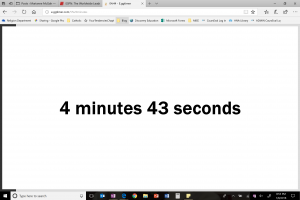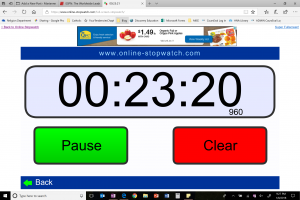I love learning about productivity and time management, through books, podcasts, blogs, conversations, whatever it may be. One time management tip that comes up a lot is to set a timer. This tip can be used in so many situations to help teachers. Here are some examples from my life:
- When I am having a hard time starting to grade, I set a timer. Maybe for 30 minutes, then be done. Or even for just 15 minutes and then I can decide if I want to continue or switch tasks.
- When I’m planning a new lesson I’ll often set a timer so I don’t get lost planning and spend 3 hours planning for a 45 minute lesson.
- If I want to challenge myself to be super productive, I’ll set a 5 minute timer and see how many emails I can respond to in that short amount of time.
- During lessons I often set timers (or have a student set a timer) for group time or individual work time. It’s amazing how off I can be if I just guess how long it’s been for an activity 🙂
Ideas for timers
I generally use my phone for a timer so I can set it and just leave it across the room or on a corner of my desk. If you like websites, two easy ones are:
e.ggtimer.com/

Egg Timer has a simple look to it that is clearly visible either on the page or in the title bar.
onlinestopwatch.com

More research
If you want to read more about the benefits of setting a timer, here are a couple blogs with great ideas:
Time Management Ninja: Set A Timer
Life Hack’s summary of a Pomodoro Timer
As you consider this productivity pro tip, when would setting a timer help you to be more productive? Have you tried this? Did it work for you?
